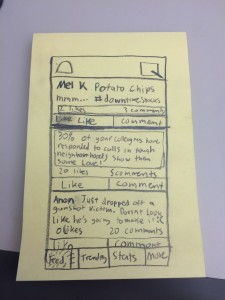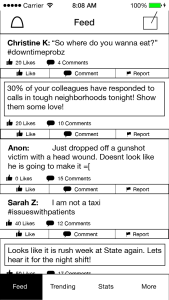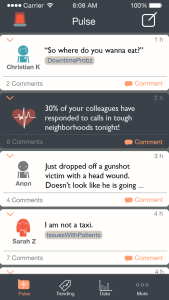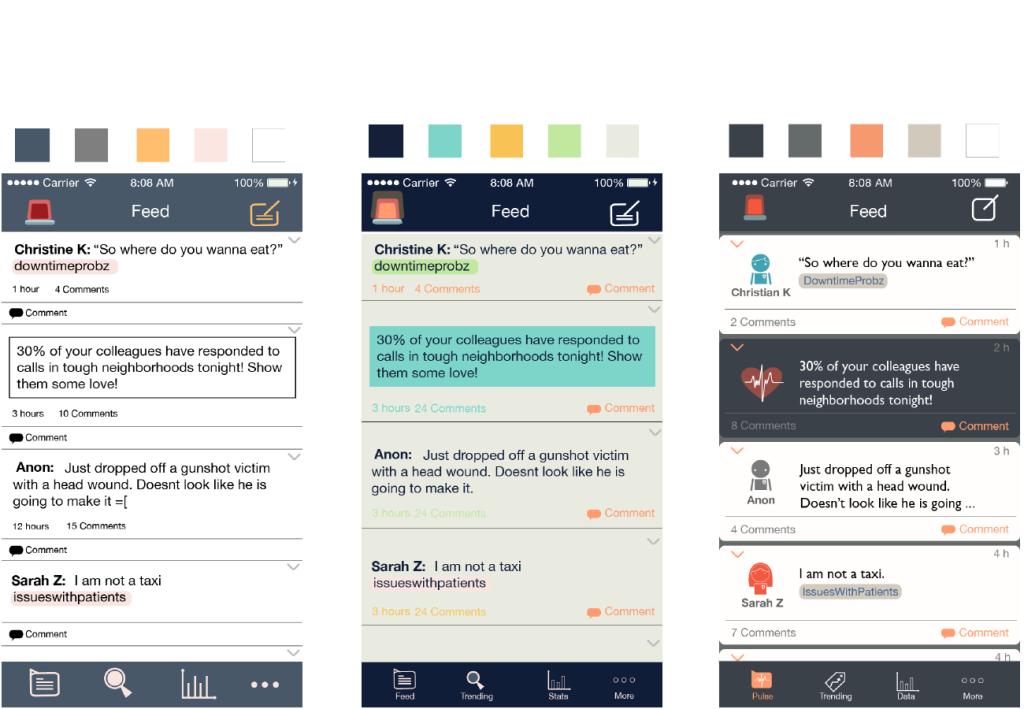My team and I created an application for ambulance drivers, paramedics, and emergency medical technicians. We used a persona-focused process to design a social media platform tailored specifically to the emergency response community.

We began our research process by interviewing 2 EMTs, 1 paramedic, and 1 ER doctor to discover the challenges faced by those who work in this field. We used these interviews to create narratives for two personas, making sure to keep a wide range of technical and physical abilities in mind for our design.

We broke our interview findings, along with our findings from online research, into small chunks of information. We arranged this information into clusters based on affinity. Using these clusters of information as a starting point, we brainstormed all the solutions we could think of to the problems presented in our data. We then organized these solution ideas by feasibility and impact and selected ideas that would be both high in impact and feasibility. We fleshed out new narratives that included our ideas and got expert feedback from other designers before deciding to create a social media platform.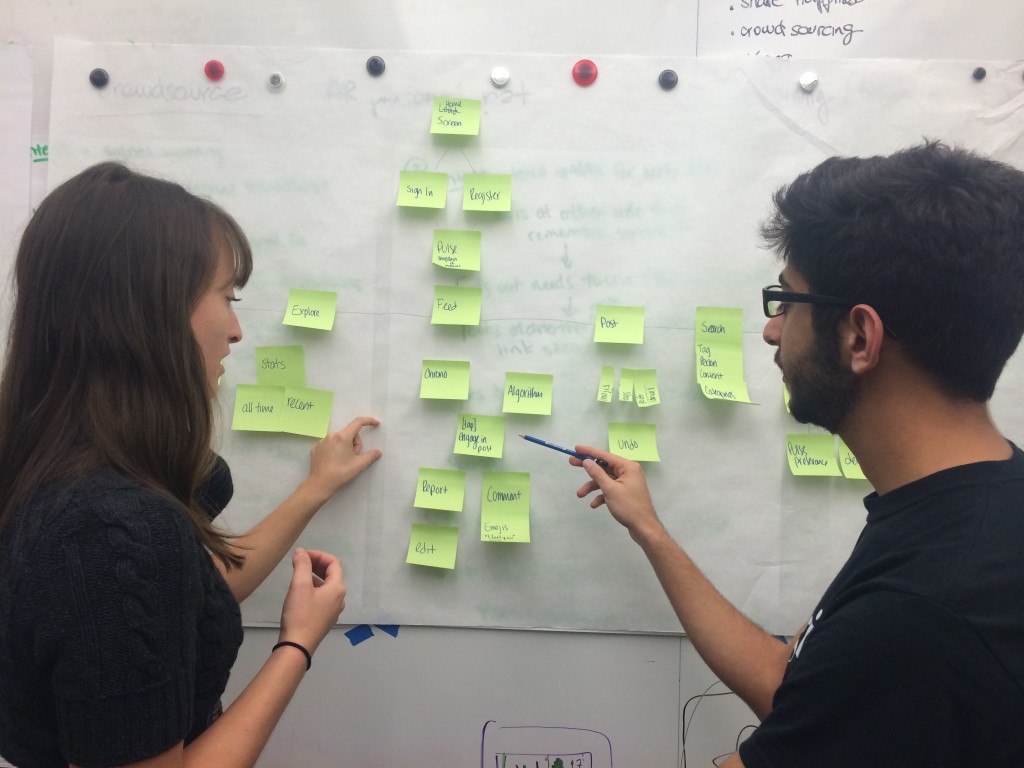
Our research process revealed the following insights:
EMS workers who love their jobs approach them with a sense of playfulness
- In some regions, ambulance teams will attempt to “steal” calls from each other, getting to a location first based on superior knowledge of traffic and roadways
- EMS workers feel there are some parts of the job so ridiculous, others simple can’t understand or joke about it
- Insight: a social media platform should engage users in a playful manner, promoting mild competition that doesn’t cause a conflict of interest
- Feature: “dummy data” will track shift length, trip distance, trip volume, and location to keep a tally of user job details, allowing users to have a log of the work they accomplish. Users can indicate when they go on and off shift.
EMS jobs expose workers to highly traumatic, dangerous, and disturbing situations that result in high rates of PTSD and burnout
- A strong interpersonal support system can combat PTSD and burnout
- EMS workers feel they have experiences the general public may not be comfortable hearing about
- Insight: we need to make sure a social network is specialized to EMS workers, promoting social engagement and constructive feedback while eliminating a focus on post performance or online negativity
- Feature: App will be for EMS workers only, requiring them to sign in with their badge number. Users may post anonymously but will not be able to comment anonymously, dissuading negative comments and promoting thoughtful interaction
EMS employees are extremely diverse in their backgrounds, resulting in a wide range of physical ability, age, and technology exposure
- Not all employees are comfortable using smart phones or have experience using apps
- Some EMS workers struggle with the physical aspects of the job
- Insight: it’s important to make sure the application is legible, highly accessible, and allows for customization to personal preference. It’s also important to promote engagement by those who may use no other social media application.
- Feature: Users can tag the posts they create to make them searchable. Users can also follow tags they find interesting, tailoring the information they see in the application to be relevant to them.
We created low, medium, and hi-fidelity mockups of our application and user tested each time.
We created a flow map to best organize navigation between pages and app features
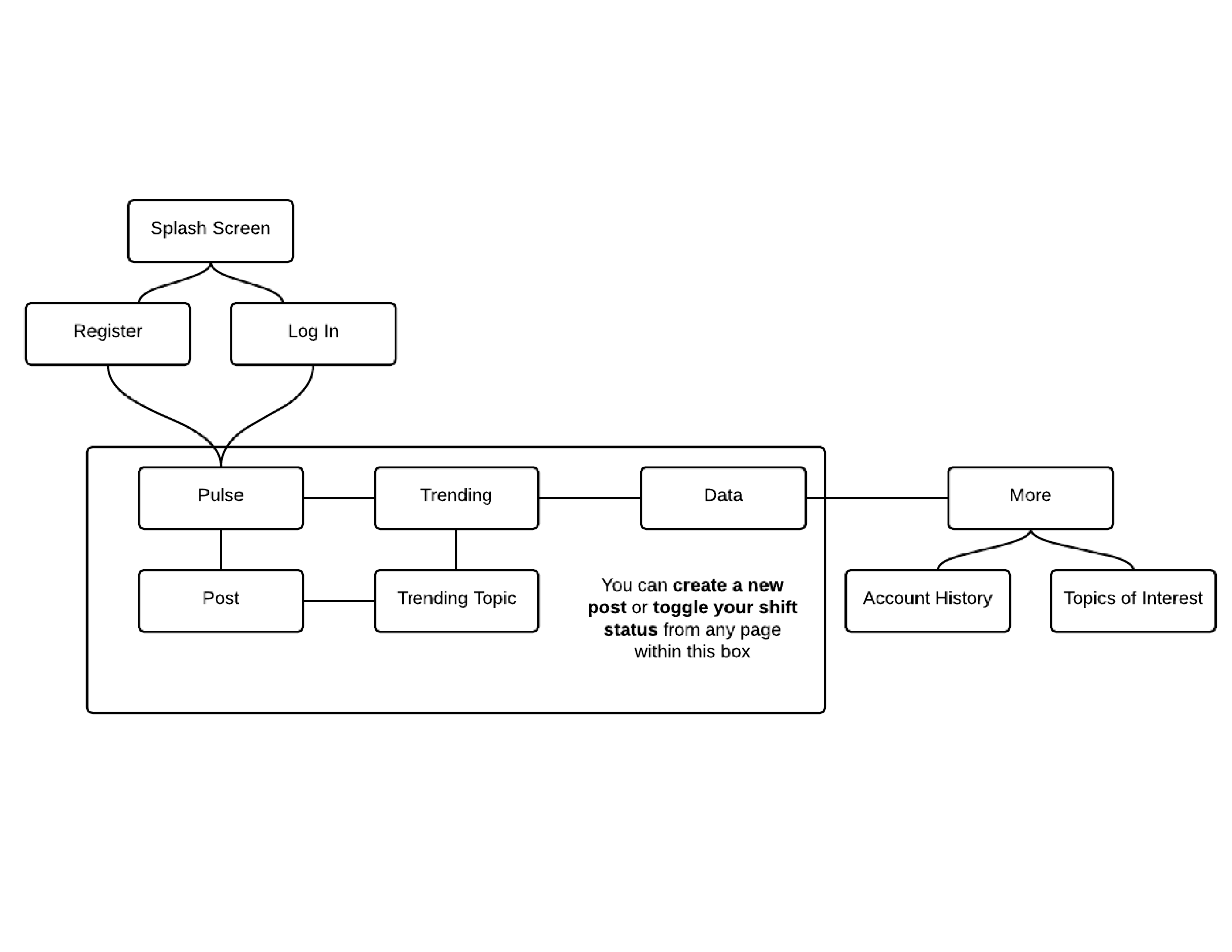
Our look and feel was important; we wanted the app to be welcoming and friendly without being whimsical or silly. We went through 3 iterations of our look and feel.
Our final design: an approachable social media platform designed to promote positive and helpful interactions among users in the EMS workforce.

